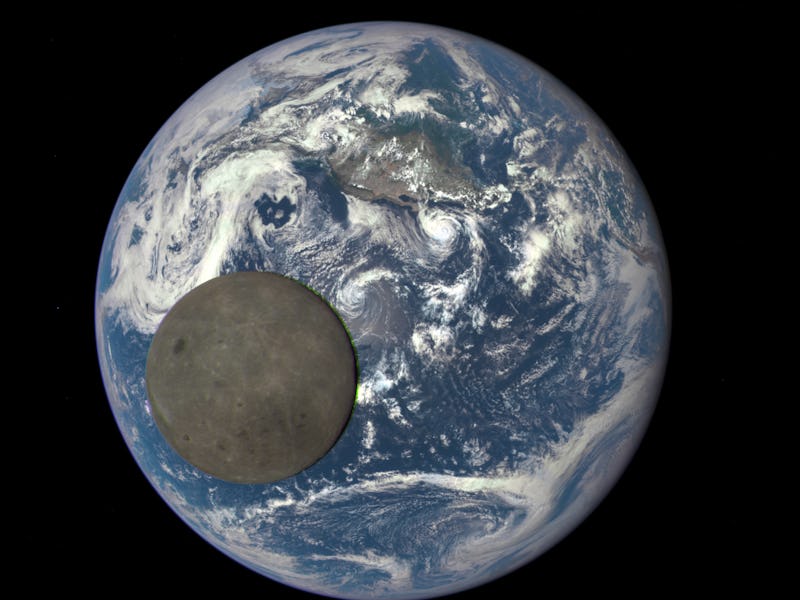China just discovered strange glass balls on the far side of the Moon
It's the first discovery of its kind.

China’s Yutu-2 rover has been roaming the far side of the Moon since January 2019, covering more than 3,000 feet of the dusty lunar surface. In this previously unexplored terrain, the rover has made some peculiar discoveries. But while it may not be a mystery hut, a pair of translucent glass spheres glimmering amid the gray backdrop of the moon’s surface are captivating the Yutu-2 team in a first-of-its-kind discovery on the rover’s remote outpost.
A study published in the February issue of the journal Science Bulletin records the new discovery, speculating on what these glass spheres may be.
The glass balls, which resemble lunar pearls that washed up on the surface, measure about 15 to 25 millimeters across. Aside from the two pictured, there were four other similar objects that Yutu-2 had detected, but the resolution of those images wasn’t clear enough for the scientists to identify them.
They likely formed either when a meteorite crashed into the Moon, heating up its surface to form glass, or from the moon’s early volcanic history, which could have formed some type of volcanic glass that would still remain on the moon’s surface. As a result of the heat, silicates turn to liquid and take on a spherical shape, which cools off rapidly and transforms to glass.
Although the moon is not volcanically active today, it has had volcanic eruptions for most of its history with the first eruption having taken place around 4.2 billion years ago.
The glass spheres were spotted near an impact crater, which may have resulted in their formation, or simply excavated them to the surface after the impact took place.
In the paper, the scientists suggest that the glass balls may have formed recently, or were at least uncovered recently, since regolith tends to cover up the surface of the moon in less than 100,000 years.
These tiny spheres could unlock secrets of the Moon’s past.
This isn’t the first time glass has been discovered on the moon.
During the Apollo 16 mission, astronauts collected tiny beads of glass that they found on the near side of the Moon in the Descartes Highlands. Some scientists claimed that the glass beads had traces of water molecules in them and that they formed after volcanoes erupted on the Moon, with tiny droplets cooling in the vacuum of space and turning into glass, which landed on the surface.
However, most of the glass beads discovered by the Apollo astronauts were much smaller than the ones that Yutu-2 stumbled upon, measuring at less than one millimeter.
Additionally, the ones discovered during the Apollo mission barely stood out amongst the lunar dust, being gray and dark as well. But the latest discovery shows translucent glass spheres that are slightly shiny.
About the Yutu-2 mission
Yutu-2 landed on the Moon in January 2019 with a mission to explore the far side of the rocky body. The far side of the Moon is the side of the Moon that faces away from Earth, which makes it more remote and therefore far less explored.
This is the fourth lunar mission by China’s space agency and the first mission by any agency to land on the Moon's far side. The first two missions were orbiters, and the third was an orbiter-rover hybrid that landed on the near side of the Moon.
The rover landed in the Von Karman crater, located near the Moon’s south pole. This area is of particular interest to scientists, as it holds water ice, which may one day be used as a resource to build a permanent lunar base on the moon.
The area has proven to be quite strange so far. In November 2021, the rover spotted the afore-mentioned odd-shaped cube on the far side of the Moon, which ended up being a boulder. Earlier in October, Yutu-2 also discovered an unusual, gel-like substance that glistened on the lunar surface.
This article was originally published on